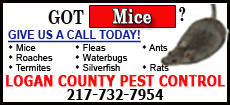 Crabgrass seed has already germinated and will continue to do so
throughout the spring and summer months. Preventive treatments
will still do some good for seed that will germinate over the
next six to eight weeks, but treatments won't get seeds that
have already germinated. The organic arsenicals, such as DSMA
and MSMA, will control newly germinated grass -- including
crabgrass. Remember, you should have a second preventive
application around June 1 for summer control of crabgrass and
other annual grasses. Crabgrass seed has already germinated and will continue to do so
throughout the spring and summer months. Preventive treatments
will still do some good for seed that will germinate over the
next six to eight weeks, but treatments won't get seeds that
have already germinated. The organic arsenicals, such as DSMA
and MSMA, will control newly germinated grass -- including
crabgrass. Remember, you should have a second preventive
application around June 1 for summer control of crabgrass and
other annual grasses.Chickweed and henbit have gone
gangbusters in lawns, fields and along roadsides. As a matter of
fact, they already have produced viable seed for germination
this fall. They are both winter annuals and can overwinter as
small plants, then take off in the spring. They certainly
accomplished that this year. These weeds will disappear during
the heat of the summer, and who knows when that will be this
year. You might be better off withholding a herbicide
application for later use this season.

With ethephon applications for nuisance fruit removal, such
as on sweet gum trees, the key is in the timing. The application
must be made during flowering but before the fruit sets in. For
most flowering trees, there is a 10- to 14-day window of
opportunity. Sweet gums are a little tricky since there are no
showy flowers involved, so effective sprays should occur just as
new leaves begin to emerge. Sprays should leave leaves wet, but
not to the point of dripping. Good coverage of the tree is
needed, so keep in mind the size of the tree when you are
weighing this option. There are injectable products available,
but they must be applied by a professional. The injectable
products have not been as effective as the sprays. This means
you'll have to really hurry to have any control on sweet gums
this year.
Should you plant tender crops susceptible
to frost? Probably only if you have a way of protecting plants
with covers, row coverings and so on. All it takes is one day or
night below freezing to cause a replant. We may return to more
normal temperatures in the future, and we normally look at early
May for planting warm-loving crops in the garden.
[to top of second column] |

What about insects? We always have more insects than we would like
in lawns, gardens and ornamentals. A warm winter, after a hot, dry
summer last year, will probably add to their numbers this year. And
the season has started early. I've seen buffalo gnats in some
locations already. Usually after a summer like we experienced last
year, we can expect a much larger number of grasshoppers. Black
cutworm moth catches have already occurred in pheromone traps, and
of the intense number needed to start calculating cutting dates for
vegetables and field crops.
As for a couple of the more common insect pests, it would
definitely be wise to keep your own vigil for their appearance.
Another method to begin scouting them out would be to use plant
indicators such as those published in Orton's "Coincide" book.
Bagworms are usually sprayed around June 15, but here are some of
the plant indicators: northern catalpa or Japanese tree lilacs in
full bloom, mock orange in bloom, hills-of-snow hydrangea beginning
bloom, and serviceberry with some ripe fruit. Euonymus scale is
usually an early June initial treatment, then followed with three
repeat applications about 10 days apart. Indicators would include
northern catalpa or Japanese tree lilac in early bloom, cockspur
hawthorn in bloom, or beauty bush in bloom. These are just some
examples if you happen to know where to find some of the indicator
plants.
[By
JOHN FULTON,
University of Illinois Extension]
 |